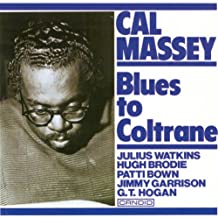
Daily Dose Of Jazz…
Calvin “Cal” Massey was born in Philadelphia, Pennsylvania on January 11, 1928 and studied trumpet under Freddie Webster. Following his studies, he played in the big bands of Jay McShann, Jimmy Heath, and Billie Holiday.
In the late 1950s Cal headed an ensemble with Jimmy Garrison, McCoy Tyner, and Tootie Heath. Occasionally John Coltrane and Donald Byrd would play with Massey’s group and in the 1950s he gradually receded from active performance and concentrated on composition.
His works were recorded by Coltrane, Tyner, Freddie Hubbard, Jackie McLean, Lee Morgan, Philly Joe Jones, Horace Tapscott and Archie Shepp. Massey played and toured with Shepp from 1969 until 1972 and also performed in The Romas Orchestra with Romulus Franceschini.
Massey’s political standpoint was radical and his work was strongly connected with the Civil Rights Movement of the 1960s and ’70s. The Black Panther Party was an inspiration for The Black Liberation Movement Suite which he created with Franceschini and was performed three times at Black Panther benefit concerts. His ideology resulted in him getting whitelisted from major recording companies and only one album was recorded under his name.
Trumpeter and composer Cal Massey passed away from a heart attack on October 25, 1972 at the age of 44 in New York City, New York.
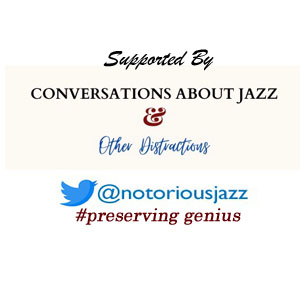
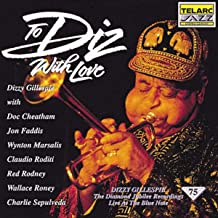
Requisites
To Diz With Love ~ Dizzy Gillespie | By Eddie Carter
For this morning’s choice from the library, I’ve chosen a CD-album to honor a true pioneer. John Birks Gillespie, known throughout the world by his nickname Dizzy was a renowned bandleader, composer, singer, teacher, and trumpet player. He, alongside Charlie Parker, changed the face of jazz forever by creating and becoming the inspirational voice of Bebop. At the time of this CD-album’s release in October 1992, he was celebrating his 75th Birthday. The folks at Telarc Jazz recognized this significant achievement with their first release performed earlier in the year at The Blue Note in New York City. Forty-seven shows in all were recorded by Telarc over an entire month resulting in one of the best live albums that year. To Diz With Love (Telarc Jazz CD-83307) also features the talents of Doc Cheatham, Jon Faddis (track: 3), Wynton Marsalis (tracks: 2 & 4), Claudio Roditi, Wallace Roney (tracks: 1 & 5), and Charlie Sepulveda (track: 4) on trumpet, Red Rodney (track: 2) on fluegelhorn, Junior Mance on piano, Peter Washington on bass, and Kenny Washington on drums.
The opener, Billie’s Bounce by Charlie Parker was composed in 1945 and dedicated to Gillespie’s agent, trumpet player, Billy Shaw. Shaw was also the inspiration for Gillespie’s composition, Shaw ‘Nuff, written a year later. The ensemble starts this standard with a vivacious introduction by the rhythm section that grows into a rapid run of the opening chorus led by the front line. Claudio kicks off this uptempo cooker with a high-energy drive that builds its emotional level enthusiastically. Wallace produces a very hot flame of exhilarating verses on the second solo. Dizzy takes the next statement for a sizzling uptempo ride. Then, Junior takes charge, swinging with an intense and passionate feeling on the fourth interpretation. Peter keeps the ingredients stirring on the next performance with a soulful groove, and Kenny wraps up the solos with a fierce attack on the finale preceding the closing chorus and climax.
Parker’s Confirmation, written in 1946 adds Marsalis on trumpet and Rodney on flugelhorn to join Dizzy. The rhythm section provides a medium beat for the horns to strut comfortably during the melody. Marsalis solos first with full-toned ease at a relaxing momentum. Dizzy is up next using the mute to offer an endearing whispery reading. Rodney follows with a subtle tone and cool modality that winks to “Bird”. The front line provides a few more statements, then Mance delivers a soft, dreamy solo preceding the climax. Up next is Mood Indigo by Duke Ellington, Barney Bigard, and Irving Mills featuring Cheatham and Jon Faddis. It was written in 1930 for a radio broadcast and originally titled Dreamy Blues. The public went wild after hearing it, Mills renamed the song Mood Indigo and wrote the lyrics for it. Doc leads off the solos with a profoundly sensitive statement. Jon conveys an emotional impact on the next reading and Dizzy delivers the blues with subtle elegance. Junior expresses delight in a brief statement before the ensemble wraps it up.
Thelonious Monk’s Straight, No Chaser was written in 1951 and is given a spirited treatment with Marsalis and Sepulveda as the featured soloists. Wynton starts swiftly on the lead solo with phenomenal energy, then Charlie burns strongly on the next scintillating statement. Dizzy shows the depth of his intensity on the third interpretation, followed by Junior who says a mouthful on the next reading. Peter provides some powerful brushwork on the closing statement.
A Night In Tunisia is Gillespie’s signature and most famous tune. It was written in 1942 and opens with an invigorating theme by the ensemble collectively. Claudio is ablaze right from the start of the first interpretation. Dizzy lights an intense fire on the second solo, then Wallace responds with a torrid reading that burns fiercely. Junior embarks on an aggressive performance that’s executed beautifully. Kenny puts the final stamp on the standard with a fierce groove on the drums. The treat though, comes at the end when during the closing chorus, Dizzy brings Lew Soloff up from the audience to lead the group into the song’s conclusion.
Telarc has created a sonic masterpiece that’s a joy to listen to by engineers Jack Renner (one of the founders of the iconic label) and Michael Bishop. To Diz With Love is not just a celebration, but an exceptional musical performance by one of the undisputed masters of Bebop. It’s also the first of three final Gillespie performances recorded before his passing and is highly recommended for any jazz fan’s collection. The other two releases are To Bird With Love, and Bird Songs: The Final Recordings!
~Bird Songs: The Final Recordings (Telarc Jazz CD-83421); To Bird With Love (Telarc Jazz CD-83316) – Source: Discogs.com ~ Billie’s Bounce – source: JazzStandards.com ~ Mood Indigo – source: Wikipedia.org © 2020 by Edward Thomas Carter
More Posts: choice,classic,collectible,collector,history,instrumental,jazz,music,trumpet

Daily Dose Of Jazz…
Joe Licari was born on January 10, 1934 in Brooklyn, New York and studied with Bob Wilber. His influences were Benny Goodman, Frank Teschemacher, Pee Wee Russell, Johnny Dodds, Sidney Bechet, and Jimmie Noone, using some of their ideas to find his own voice.
Known as an especially “hot” player with an exuberant and always emotive attack, Licari has worked along side of Roy Eldridge, Wild Bill Davison, Conrad Janis, Big Chief Russell Moore, Connie Kay, Bob Haggart, Vic Dickenson, Pee Wee Erwin, Doc Cheatham and the vocalist Julie Wilson. He’s also appeared in films, on television and radio shows and in clubs, sometimes standing in for Woody Allen.
As a leader, he recorded three albums and dozens as a sideman working as a featured player on albums by The Red Onion Jazz Band, Julie Wilson, Big Chief Russell Moore, Herb Gardner, Dick Voigt’s Big Apple Jazz Band, Jim Lowe, Dorothy Loudon, and Betty Comora. As a member of the Grove Street Stompers, they were a prominent fixture for decades on Monday nights at Arthur’s Tavern in Greenwich Village.
Clarinetist Joe Licari continues to record and perform at various clubs around New York City with The Speakeasy Jazz Babies, The Smith Street Society Jazz Band, Swing 39, Mark Shane. Delta Five, and Jon-Erik Kellso`s Hot Four.

More Posts: clarinet,history,instrumental,jazz,music
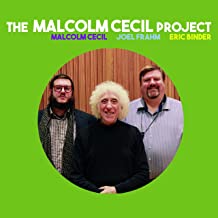
Daily Dose Of Jazz…
Malcolm Cecil was born on January 9, 1937 in London, England. By the time he came of age he was a founding member of the UK’s leading jazz quintet of the late 1950s, The Jazz Couriers, before going on to join a number of British jazz combos led by Dick Morrissey, Tony Crombie and Ronnie Scott into the early 1960s.
Malcolm later joined Cyril Davies and Alexis Korner to form the original line-up of Blues Incorporated. With Robert Margouleff he formed the duo TONTO’s Expanding Head Band, a project based on a unique combination of synthesizers. This led to them collaborating on and co-producing several of Stevie Wonder’s Grammy-winning albums Talking Book, Music of My Mind, Innervisions and Fulfillingness’ First Finale of the early 1970s. They are also credited as engineers for the Stevie Wonder produced 1974 album Perfect Angel by Minnie Riperton.
Their unique sound made them highly sought-after and they went on to venture in not only jazz, but rock and r&b to collaborate with, amongst others, Quincy Jones, Gil Scott-Heron, Weather Report, Bobby Womack, The Isley Brothers, Billy Preston, Stephen Stills, The Doobie Brothers, Dave Mason, Little Feat, Joan Baez and Steve Hillage. Bassist, engineer and record producer Malcolm Cecil continues to perform and produce.

More Posts: bandleader,bass,history,instrumental,jazz,music,record producer
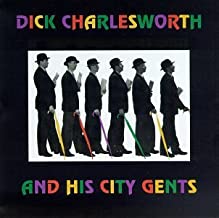
Daily Dose Of Jazz…
Dick Charlesworth, born Richard Anthony Charlesworth on January 8, 1932 in Sheffield, England. Attending King Edward VII School, at 16, he became a clerk in the Ministry of Labour and was in due course transferred to London. He bought a clarinet and started playing jazz as a hobby in 1952. Entirely self-taught, he became good enough to play clarinet and saxophone in a dance band and performed with jazz bands in south London including Jim Weller’s Jazzmen.
He formed his first group in 1956 and his Dick Charlesworth’s Jazzmen won the South London Jazz Band Championship in 1957. His group was signed by the Melodisc label, and they recorded an EP in December 1957 and produced an album for Doug Dobell’s 77 Records.
Leaving the Civil Service in 1959 he became a professional musician and signed a recording contract with EMI, remarketing the group as Dick Charlesworth’s City Gents. This was the time of light jazz, sporting distinctive attire of pin stripes and bowler hats, with their Latin motto, Dum vivimus vivamus, simply translated as “While we live, let us enjoy life”. They charted one single Billy Boy on the UK Singles Chart in 1961.
When jazz went out of vogue in the Sixties, Dick broke up his band, and from 1964 to 1969 fronted a band on the cruise liners. He then settled in Mojacar, Spain where he ran a music bar. Returning to Britain in 1977, he was active on the London jazz scene until the early 2000s working with, among others, Keith Smith, Rod Mason, Alan Littlejohn, Denny Wright, and appeared on the BBC Radio series, Jazz Score.
In his later years, Charlesworth lived in Thames Ditton, Surrey, and played a residency at various pubs with his band The Dick Charlesworth’s Fraternity Four, and released their final recording in 2004. Clarinetist, saxophonist and bandleader Dick Charlesworth passed away following a heart attack on April 15, 2008, at the age of 76.

More Posts: bandleader,clarinet,history,instrumental,jazz,music,saxophone


